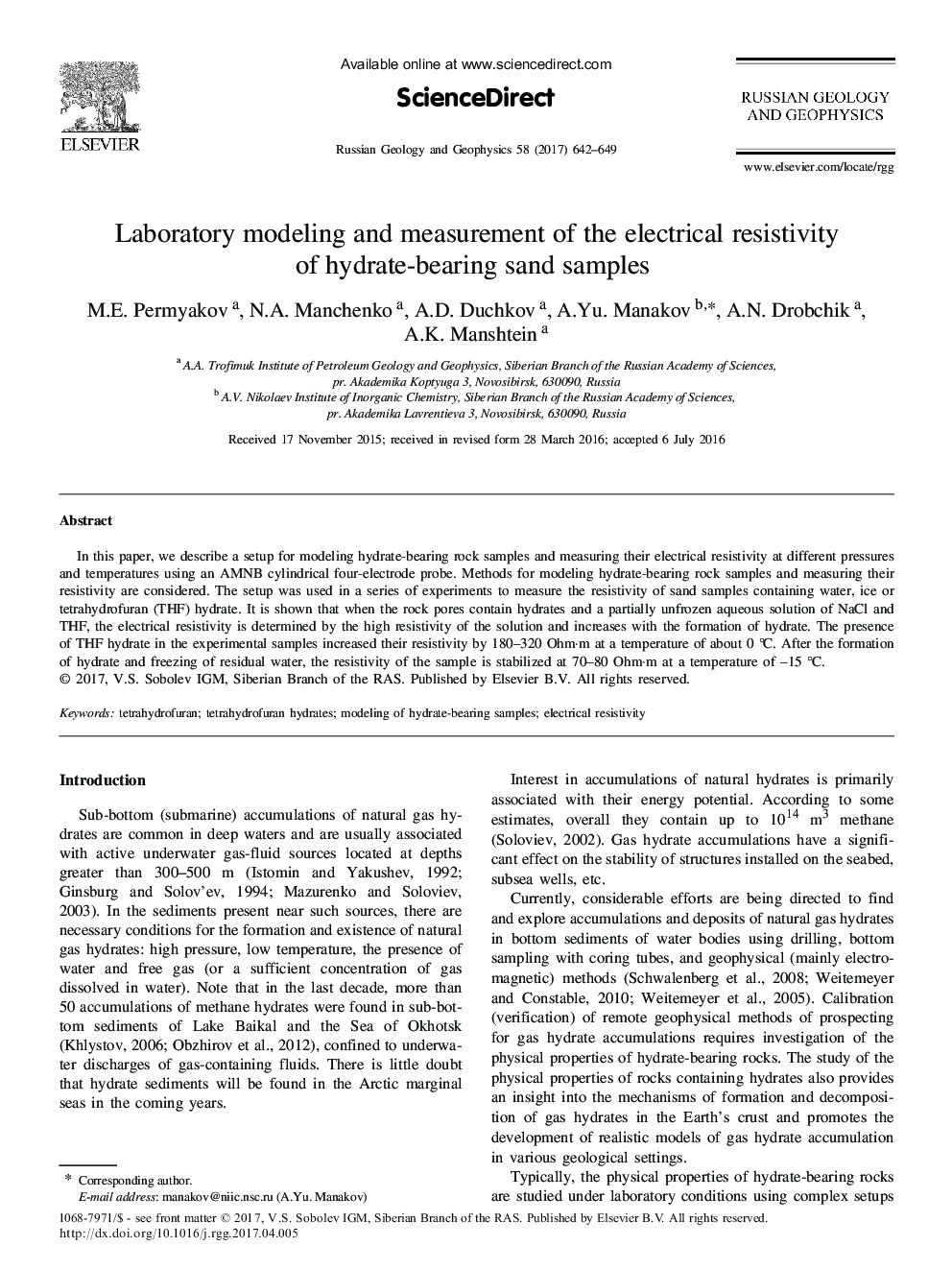| Article ID | Journal | Published Year | Pages | File Type |
|---|---|---|---|---|
| 5786907 | Russian Geology and Geophysics | 2017 | 8 Pages |
Abstract
In this paper, we describe a setup for modeling hydrate-bearing rock samples and measuring their electrical resistivity at different pressures and temperatures using an AMNB cylindrical four-electrode probe. Methods for modeling hydrate-bearing rock samples and measuring their resistivity are considered. The setup was used in a series of experiments to measure the resistivity of sand samples containing water, ice or tetrahydrofuran (THF) hydrate. It is shown that when the rock pores contain hydrates and a partially unfrozen aqueous solution of NaCl and THF, the electrical resistivity is determined by the high resistivity of the solution and increases with the formation of hydrate. The presence of THF hydrate in the experimental samples increased their resistivity by 180-320 Ohm·m at a temperature of about 0 °C. After the formation of hydrate and freezing of residual water, the resistivity of the sample is stabilized at 70-80 Ohm·m at a temperature of -15 °C.
Related Topics
Physical Sciences and Engineering
Earth and Planetary Sciences
Geology
Authors
M.E. Permyakov, N.A. Manchenko, A.D. Duchkov, A.Yu. Manakov, A.N. Drobchik, A.K. Manshtein,
